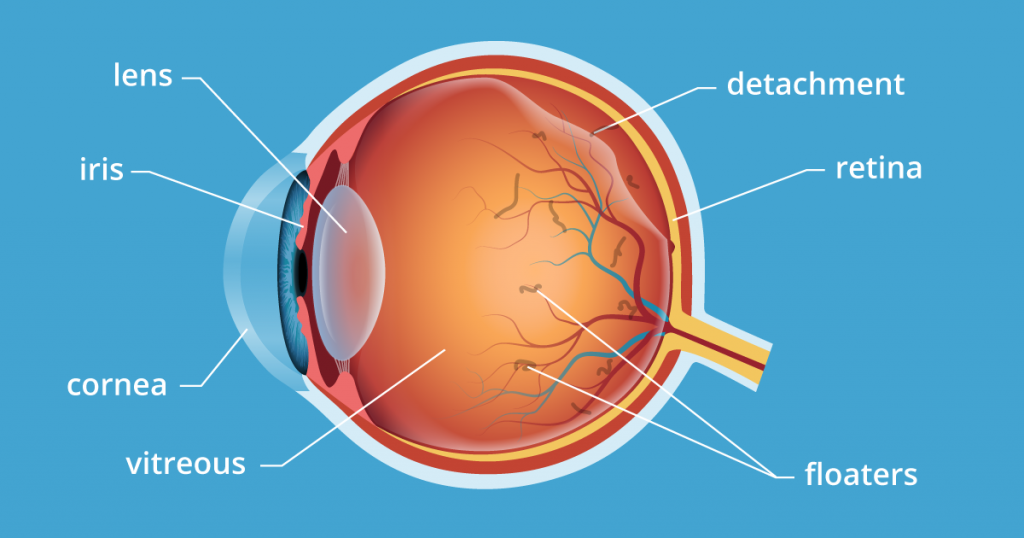In today’s section, will clear all the doubts regarding those tiny, movable, black spots in the vision which are known as Eye Floaters.
“My eyes are an ocean in which my dreams reflect…but when I focus in on my vision, the tiny moving spots reflect.” Madhumita asked awfully, “Did you experience those black spots or strands that often drift into the line of our vision?”
Human Eye
The human eye is an organ that allows vision. Eyes help to provide three dimensional, moving image, normally colored in daylight. The cornea, iris, pupil, lens, retina, macula, optic nerve, choroid, and vitreous are the various components of an eye.
- The cornea is a transparent structure in the front that helps to focus incoming light through the pupil. Iris is a colored part that regulates the amount of light entering.
- Behind the iris, there is Lenses which helps to focus light, or an image, onto the retina.
- After passing through the lens, the light must travel through the vitreous humor before striking the retina.
- The retina is the light-sensitive tissue lining at the back of your eye that converts the light into electrical impulses that are sent along the optical nerve to the brain.

Eye Floaters
The National Eye Institute describes Eye Floaters as the small spots that drift through your field of vision. These are common and regarded as harmless, appears when we look at the bright or clear things like sky, plain paper, etc.
They may appear in different shapes;
- Black or gray dots
- Squiggly lines
- Threadlike strands, which can be knobby and almost see-through
- Cobwebs/Spirals
- Rings
Eye floaters move as your eyes move and seem to dart away when you try to look at them directly. They do not follow your eye movements precisely and usually drift when your eyes stop moving.
And we may not notice them until they become numerous or more prominent.
When do they appear?
The vitreous humor, a gel-like substance that fills about 80% of the eye, is made up of protein fibers.
With age, the protein fibers start to shrink. That makes the protein fibers to form stringy clumps which further cast tiny shadows on the retina. We call them as Floaters.
When the age pass-by, it appears like strands, deposits, or liquid pockets deposited in the area.
The floaters may appear at any age. It is a part of the natural aging process. During childhood, the vitreous gel is usually clear and transparent.
There are certain causes to it;
- Nearsightedness
- History of cataract surgery
- Eye problems like eye injury, infection, inflammation, hemorrhage, etc.
- Eye diseases or Tumors
- Diabetic Retinopathy
- Detached Retina
- Migraines or Headaches
The floaters tend to become common with age. They might annoy you, but we learn to ignore them. Though they appear often, rarely they require treatment.
If floaters suddenly become so dense that they disrupt your vision, you must consult your doctor. The doctor may perform a Vitrectomy or Laser treatment to overcome the eye floaters.
